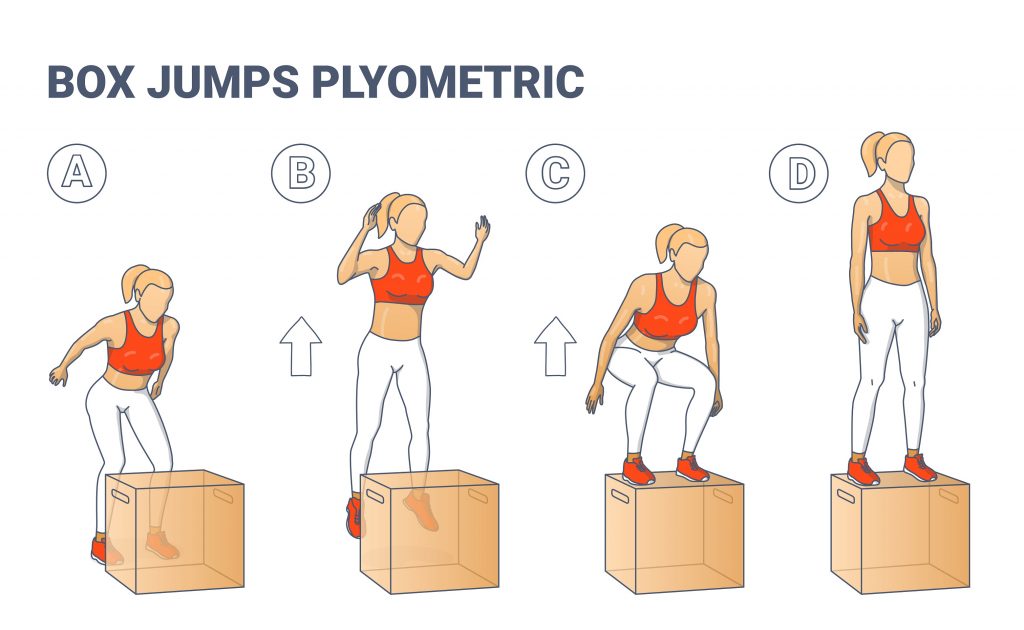Under the influence of plyometric training occurs the adaptation of muscles to work in a larger range of motion, so that increases the motor characteristic, which is flexibility. Plyometric training is a set of specific exercises that develop muscle power, thereby increasing the parameters of acceleration and jumping. The combination of these exercises with other exercises allows to significantly increase the development of strength capacity with proper maintenance of the maximum force to power ratio.
Plyometric exercises
This training is recommended mainly in sports disciplines and activities where running, jumping, or lifting is required. Increasingly, plyometric training is an indispensable training element in fight sports. In plyometrics, the most important thing is the quality of exercise, not its quantity, so special attention should be paid to the technique of performing them.
This type of training is not suitable for children at the age of adolescence, due to the relatively high body load.
Before starting plyometric training, a screening test (e.g. FMS, which allows the assessment of abnormal patterns and asymmetries that affect body motor skills) should be performed. Balance, flexibility, and stability are qualities that should be exhibited prior to undertaking plyometric training.
Particular attention should be paid to the technique of performing individual exercises, as this facilitates the development of strength over time and the development of neuromuscular coordination. Poor exercise technique can lead to injuries and damage to the musculoskeletal system.
How to perform plyometric exercises?
Each plyometric workout should begin with an appropriate warm-up. During the warm-up itself, various forms of athletic activity are used, such as:
- jogging
- strengthening exercises
- dynamic stretching
- abdominal and back muscle exercises
All this is done in order to properly prepare the musculoskeletal system for the effort that will be made during the plyometric exercises. In the main part of the training unit, mainly dynamic strength work is used, followed by rest and recovery with the use of stretching and replenishment of fluids and carbohydrates.
Examples of plyometric exercises
- multi-jumps
- bipedal jumps
- jumps on the spot
- jumps over hurdles
- jumps on the box
- jumps off the box
- jumps from a deep sit
What does safe and effective plyometric training look like?
For plyometric training to be effective and safe, it is important to choose the right conditions, equipment and facilities. The best place for plyometric training is a level, grassy and fairly flexible surface. Equipment helpful in training will be a ramp, bench, steps, hurdles, boxes, medicine balls. You should also take care of appropriate sports clothing, which must be comfortable. It is necessary to remember:
- to warm up quite specifically, to perform functional movements, such as marching or body swings
- select properly cushioned training shoes to avoid injuries related to specific exercises
- stay as focused as possible throughout your workout
- avoid jumping from excessive heights
- exercise in the most technically manner possible, which will also contribute to maintaining an appropriate exercise tempo
- don't underestimate this type of training as it is very demanding

What are the advantages and disadvantages of plyometric training?
Advantages of plyometric training
- improvement of muscle strength
- increase in muscle power without gaining muscle mass
- improvement of neuromuscular coordination
- improvement of agility
- improving flexibility
- improving speed
- increased general fitness of the body
Disadvantages of plyometric training
- reduction of psychological comfort
- the possibility of damage to the musculoskeletal system
- high overloading of joints, bones and tendons






